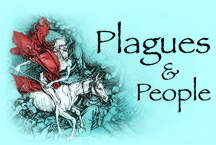| The doctors of the Indians are very superstitious and carry along with
them the hearts of the innocent people. When the doctor is called
to see a sick person, he asks him about his illness and in what place and
spot the sickness came upon him. And after the sick person has said
what has happened to him, the doctor ... [attributes the illness] to the
fact that the saint of his village is angered, or that the fire is, and
he tells them, for a remedy to the sickness, to seek for him a hen to sacrifice,
pulque, roses, and poquietes [smoking tobacco],
and that he will return the following day. Some order that the hens
be beheaded before the fire and that they have the food [already] cooked;
others do it themselves.
When all of this has been prepared, the doctor comes and takes the blood
of the sacrifice and anoints the three rocks that are like a trivet....
And then he takes the tamales and the dressed fowl, the roses, and poquietes
and divides them into two parts. One he offers to the fire, and the
other he sends to be offered before the image or to the church, where he
lights a wax candle. He makes his speech and petition to the fire
and then pours out a little of the pulque before it.... And after
this has been finished, the doctor and the persons present eat the fowl
and drink the pulque, and the poor sick person waits for the fire to make
him well.
If other sick people say that they took sick near a stream, a spring,
or a river, [the doctors] make them carry everything mentioned to some
spring and offer it to the goddess of waters, whom they call Matlalcueyeque
[sic] or Chalchihuitl Icue, and carry their wax candle and light
it.
To others they [call on] the goddess Chicome-Coatl, the goddess of cereals.
They make great sacrifices to this goddess when they or one of their children
are sick. And the way they do it is for the doctor to take a hen
and go to where they have the maize drying in their small enclosures or
in front of the granaries, and there they behead the hen and order it to
be dressed and tamales to be made and to have pulque. And when this
is done, he offers one half to the fire and sends the other half to be
offered before the small enclosures or granaries where the maize is.
And there he burns a little copal, which is their incense.
Several cures are performed on children by some doctors whom they call
tetonalmacani,
who are the ones who return the [the soul] to the children who have lost
it. And they say certain words while putting a certain root which
they call tlacopatli on their crowns.
[Tlacopahtli: "stick medicine"; Aristolochia
mexicana, a climbing vine with seedpods. Root is used as a potion
for urinary problems, to cure deafness, tumors, clear vision, heal broken
bones, treat worms, alleviate dysentery and stimulate the appetite.]
Others, having sacrificed the hen to the fire, and while pouring out the
pulque, palpate the child with piciete, which is tobacco, and invoke
Quetzalcoatl, addressing their prayer to him.
They also attribute the sicknesses of children to the winds and clouds,
and they ... blow on the winds, while making their incantation to them.
Those who are surgeons who cure broken bones invoke, and seek the favor
of ... the hills that are between ravines, in order that they help their
cure.... |

